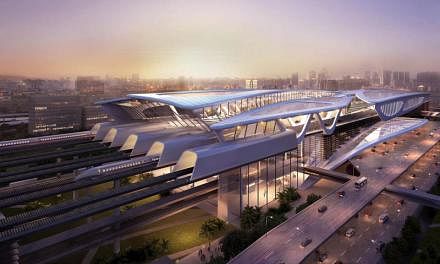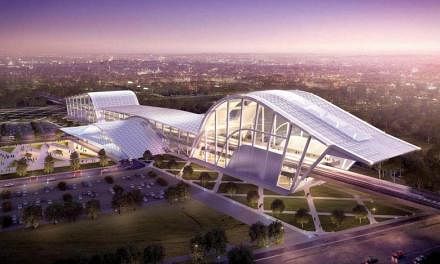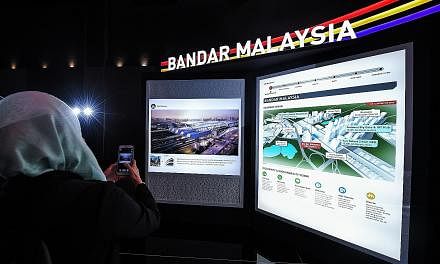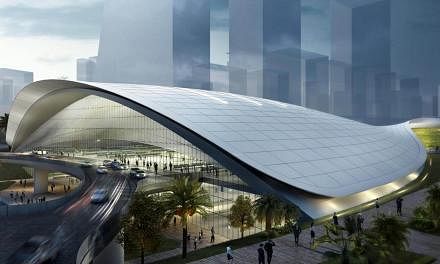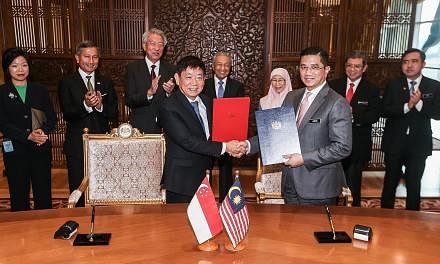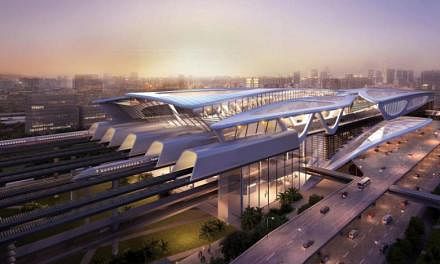A memorandum of understanding (MOU) may not be legally binding, but it represents a significant step for Singapore and Malaysia as the two countries work towards their most ambitious infrastructural venture to date.
It indicates that most of the major issues of the Singapore-Kuala Lumpur high-speed rail link have been ironed out, and that the next step would be for lawyers to draft a more definitive and comprehensive document.
Hopefully, when all the i's are dotted and t's crossed, both sides will have a bilateral agreement soon, possibly in the next six months or so. Such an agreement will be legally binding and would hold even if there is a change of governments.
That would lend certainty to the mega project and, in turn, attract quality bidders to create a system that is superior and sustainable.
When the bilateral agreement is signed, tenders for an advanced engineering study could be called as early as next year, and civil works tenders could follow soon. If so, construction could begin around 2018, and take around seven years to complete. Testing and commissioning will then follow.
At this juncture, the MOU is the firmest commitment to a project that has been on the drawing board for at least 20 years.
A high-speed rail connection between Singapore and Kuala Lumpur has been discussed since the mid-1990s. But the gears were engaged only in 2013, when Prime Minister Lee Hsien Loong and his Malaysian counterpartNajib Razak agreed on such a project at an annual leaders' retreat.
For such a complex project that neither side has any experience in, three years to reach an MOU is fairly swift progress.
The two sides said yesterday that they would work towards a line that is up and running by 2026 - just 10 years away. Of course, delays are common in such mega projects. The Hong Kong-Guangzhou high-speed rail link, the California bullet train project, and the Haramain high-speed line in Saudi Arabia are just three current projects that are facing delays.
But even if the Singapore-KL project opens in 2030, it is not too far on the horizon.
Why a high-speed rail link in the first place, though? Aren't Singapore and KL already linked by road, traditional rail and air services?
The answer lies in the unmatched connectivity and convenience that a high-speed train system offers. In terms of capacity and frequency, a bullet train is unbeatable. One train will be carrying what five Airbus A-320s carry, and will have a fraction of the plane's turnaround time. In terms of convenience, the customs and immigration clearance for rail is often much faster than that for air travel.
Also, stations are not as far-flung from city centres as airports.
It is good news that the Singapore-KL line will have an express service linking the two cities. This is likely to have priority over the domestic services linking six cities in between.
There will also be a shuttle service between Iskandar Puteri and Singapore. Co-located Customs, Immigration and Quarantine facilities in Singapore, Iskandar Puteri and Kuala Lumpur will allow travellers to achieve clearance at the point of departure, and not at the point of arrival.
This will boost convenience. The Iskandar Puteri-Singapore shuttle will be popular for the many Singaporeans who have set up second homes in Johor, and could encourage even more to consider a second or third property there.
The road link between the two locations is often fraught with congestion at the Tuas or Causeway checkpoints, which could turn a 30-minute drive into a three-hour nightmare. A high-speed rail link could mean dependable 15-minute commutes between Iskandar Puteri and Jurong East - a breeze.
Breezy and seamless access has to underpin a high-speed rail connection. Because unlike a road link, where the externalities of poor design and slow customs clearance are borne by individuals who choose to travel at a certain time, inefficient passenger flow (in this case, at departure) could hold up train runs, and affect the commercial viability of the operators. This, in turn, will impact the attractiveness and sustainability of a multibillion- dollar project that would have been 30 years in the making by the time the first train departs.




